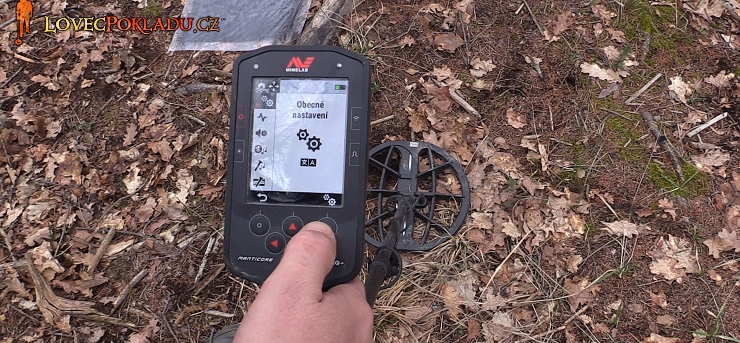Díky za skvělou názornou ukázku. Jsou lokality, kterým jsem se s jiným detektorem vyhýbal, ale s Mantou jsem si je naopak zamiloval. Člověk má pocit, že má víc pod kontrolou co chce vidět a co opravdu pod povrchem "vidí". No a hra v duchu "udělej na grafu co nejhezčí kolečko" mě taky baví.  Nejradši mám ale ty lesní, hodně hluboké cíle, kdy si Manta není úplně jistá co vidí a já už teprve ne. To je pak takový ten správný hledačský adrenalin v podobě nejasného kopu.
Nejradši mám ale ty lesní, hodně hluboké cíle, kdy si Manta není úplně jistá co vidí a já už teprve ne. To je pak takový ten správný hledačský adrenalin v podobě nejasného kopu. 
Metal detector Minelab Manticore in extreme mineralization
Categories: Detektor kovů Minelab Manticore

Today I have prepared a very interesting experiment that could help especially searchers who are in locations with very unfavourable soil conditions. During my constant search for something on the workshop I came across one such product from Minelab, which is used to testMinelab's pulse detectors designed to search for natural gold in extreme soil conditions.
It's actually two sheets between which is placed a continuous layer of heavily ferruginous rock. The concentration of iron in this case is so extreme that even a whole foil can easily hold onto the magnet. I immediately thought to test how the effect of this extreme mineralization would affect the graphical evaluation of my Manta and how much it would change the range in such an environment on different types of targets, and if such strong mineralization can be eliminated by ground tuning.
What really pleasantly surprised me was that the detector was able to detune such strong mineralization without any problem without showing up on the graph, especially considering how it held up on the magnet... However, the detector was tuning quite low numbers over the foil (the GB detuning was coming out 2-3).
Anyway, you have to remember that the signal going from the coil to the detector is affected by 2 main factors, the response from the ground and the response from the target. To better understand what is going on in the detector in this case, the whole situation can be compared to the case where you have two targets under the probe at the same time. The whole thing works very much like the detector separation in that if you put an iron hairpin on the thaler, the detector will see the thaler and the signal from the thaler will not be significantly distorted.
The opposite situation logically occurs if you put a small gold earring on the iron combo. The detector will see the target as an iron knuckle. It follows that it always depends on the ratio of the strength of the responses from each target, and the same is true here.
However, in the case of such extreme mineralization, only the strength of the response from the target changes, because the response from the ground remains more or less constant at a given location. This implies that if the target is at the surface it is usually identified correctly, but as it gets deeper the strength of the response from the target decreasesle
and changes the ratio of responses from the target and from the ground, which remains constant, which starts to bias the response to the target.
Multi-frequency detectors have a great advantage in this environment due to their ability to compare responses from several different frequencies to a single target. In this case, of the multi-frequency technologies, the Multi IQ technology clearly dominates by a huge margin. The single frequency detectors absolutely failed even when the target was on the surface only under the foil, and the single frequencies of the otherwise multi-frequency detectors failed as well.
Since I don't want to stir up too much emotion in the discussion, we tried the same target only under the foil to be sure on a detector that is no longer sold. The Troy X5 was a total class act among detectors at the time of its inception. Even when I set the ground detuning to the exact edge where the detector did not accept ground and the discrimination so that the detector even slightly accepted iron, I still got no response on the target that was just under the foil.
The other single frequency detectors we tried were similar. To be safe, we preferred not to spin it. Anyway, if anyone is interested, this test foil is available in Jílové and by prior arrangement you can stop by to test your detector and see for yourself.
That's about it for this topic, which is very extensive, but we will probably come back to it in the future.
The article is included in categories:
- Archive of articles > Metal Detectors - Reviews and Tests > Minelab – tests and reviews > Detektor kovů Minelab Manticore
Post
Jo hra na kolecko me taky bavi😉dobry ze tady se da vystredit signal presne podle grafu😉
Příští vydeo bude test nově zakopaných cílů v polygonu s přítomnosti železa (hřebíčků). Zase použijeme snímání LCD (tentokrát se nám nějak rozpadnul držák). Na testu ukážeme jak Manta sleduje oba cíle (železo i barvu). 









